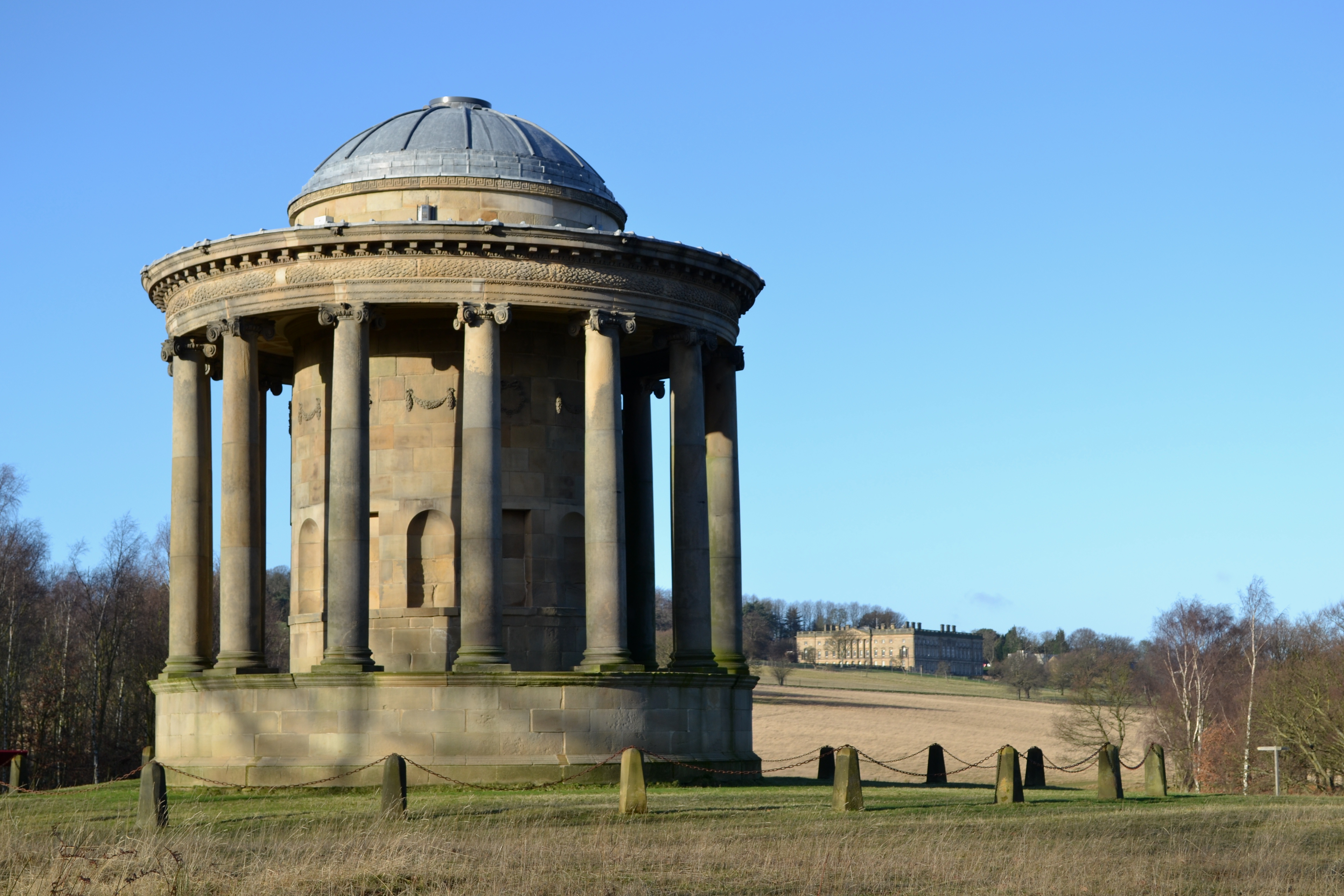The Rockingham Mausoleum was commissioned by the Earl Fitzwilliam as a memorial to Charles Wentworth, second Marquess of Rockingham in 1783.[1] It is one of several monumental follies
Ornamental structure with no practical purpose, built to enhance a designed garden or landscape. in the grounds of Wentworth Woodhouse in South Yorkshire including Keppel’s ColumnOne of several follies and monuments erected on the Wentworth Park Estate in South Yorkshire., the Needle’s Eye, Hoober StandMonumental tower in the form of a tapering pyramid topped with a hexagonal lantern, named for the ancient wood in which it was erected., the Doric Temple and the Bear Pit. The monument is owned by the Fitzwilliam Wentworth Amenity Trust, a charitable trust formed in 1979 with an endowment from the 10th Earl Fitzwilliam.[1]
The folly is not a mausoleum as Rockingham, who was twice Prime Minister, is buried in York Minster and contemporary sources refer to it as “The Monument”. Lord Fitzwilliam commissioned the architect John CarrProlific architect who worked mainly in the North of England, (1723–1807). who had built the stable block at Wentworth to design the memorial. He submitted different options including an obelisk. The chosen design took four years to build and was completed in 1789.[1]
Surrounded by woodland, only the top level of the 90 foot, three-storey structure is visible above the trees. The ground floor, an enclosed hall, contains a statue of the Marquess of Rockingham.. The first floor has an open colonnade of Corinthian columns surrounding a sarcophagus and above it is a Roman-style cupolaSmall dome on top of a roof or other high structure.. English Heritage granted Grade I listed status in 1968.[2] Pevsner described the monument as “an outstandingly fine and noble structure”.[3]
Structure
The three-stage monument was inspired by the Cenotaph of the Julii at St Remy de Provence in France.[3] It is built of AshlaMasonry of squared and finely cut or worked stone, commonly used for the facing of a building.r sandstone on a stepped plinth. It stands with four freestanding obelisks within an iron-railed enclosure.[2] The rusticated lower stage has a Doric frieze and cornice. It is square in plan with a doorway facing Wentworth Woodhouse. Its double door is in a corniced architrave is flanked by Doric columns with an entablature and pedimentLow-pitched gable above a portico or façade.. The other sides have boarded windows in matching surrounds.[2]
Inside is a robed statue of Charles Wentworth by Nollekens on a pedestal inscribed with epitaphs in prose by Edmund Burke and in verse by Montagu. An iron cage now surrounds the statue.[2] Four niches set round have paired bust bases inscribed with the names of Rockingham’s closest friends: Edmund Burke by John Hickey, John Lee, Frederick Montagu, Charles James Fox and Sir George Saville by Nollekens, Admiral Keppel by Guiseppe Ceracchi, Lord John Cavendish and the Duke of Portland by John Bacon Snr.[4] The busts have been removed for safe keeping and replaced by casts.[5]
On the second stage, paired Corinthian columns flank four round-arched openings that surround an empty sarcophagus. Each opening has a console-shaped keystone. Above it is a peristyleRange of columns surrounding an architectural feature. colonnade topped with a domed cupola.[2]
The building is surrounded by railings made by iron-founders Samuel Walker and Company in Rotherham. When Wentworth’s parkland and gardens were re-planned by Humphrey Repton in 1792, four obelisks that stood on the west side of the house were moved to the monument and installed inside the railed enclosure.[1]
Restoration
The Fitzwilliam Wentworth Amenity Trust, formed in 1979 with an endowment from the 10th Earl Fitzwilliam, own the monument. In the 1980s after coal mining had finished, the trust restored the monument using compensation from British Coal and funds from English Heritage. Iron clamps that held the structure stable while mining was in progress were removed. The monument was opened to the public in 1991.[1]


